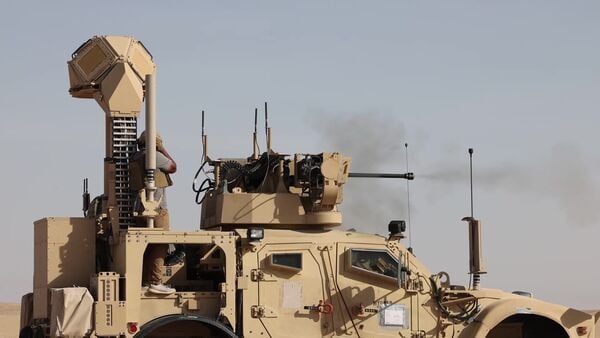- About
- Intara
- Capabilities
- Advisory
- Resources
- News
- Store
27 December 2023
US Army details acquisition plans for Coyote C-UAS capability
by Meredith Roaten


The US Army's 30 mm counter-UAS turret in M-LIDS fires at a target from Udairi Range, Kuwait. (US Army)
The US Army is increasing the number of Coyote loitering munition interceptors as part of the Mobile-Low, Slow, Small Unmanned Aircraft Integrated Defeat System (M-LIDS), according to a new contracting notice.
The army plans put Raytheon on contract to build 6,000 Coyote kinetic interceptors by 2029, according to the request for information (RFI) released on 18 December. The Coyote Block 2 counter-unmanned aircraft systems (C-UASs) have been taking out group 3 UASs in the Central Command area of responsibility (AOR) for some time, Major General Sean Gainey, director of the Joint C-UAS Office (JCO), said in August 2023 during the annual Space and Missile Defense Symposium.
The division sets that the army has started building would have five Coyote interceptors on one vehicle to be manned by an air-defence battery. This formation would be complemented by electronic warfare C-UAS capabilities manned by division soldiers.
“So that divisional ADA [Air Defense Artillery] Battalion will have the batteries worth of counter-UAS capability and soldiers manning that capability,” Maj Gen Gainey said.
In addition to kinetic interceptors, the army needs 252 fixed-site Coyote launcher systems, 25 mobile Coyote launcher systems, and 700 non-kinetic Coyote Block 3 interceptors, according to the RFI. The document also requests more than 100 Ku-band Radio Frequency System (KuRFS) radars, which is the main sensor for M-LIDS.
Already a Janes subscriber? Read the full article via the
Client Login
Interested in subscribing, see What we do
The US Army is increasing the number of Coyote loitering munition interceptors as part of the Mobile...
Associated services
 Details
Details 